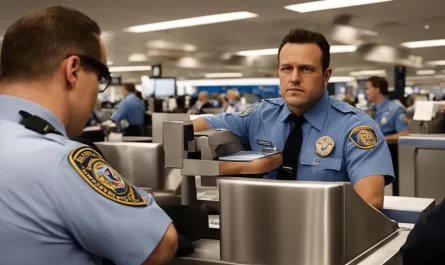What Batteries Are Allowed in Carry-on Bags by TSA?
Contents
As you gear up for your next travel adventure, packing smartly is key—especially when it comes to carrying batteries. Batteries power our essential gadgets, but did you know that the Transportation Security Administration (TSA) has specific rules for which types can be brought on a plane in your carry-on luggage?
All batteries permitted in carry-on baggage, except for lithium batteries, can also be packed in checked baggage. However, it’s advisable to carry them in your hand luggage. This allows airline crews in the cabin to monitor conditions more effectively and quickly access the batteries or device in case of a fire.
Here’s a comprehensive guide to help you pack your batteries safely and avoid any hiccups at airport security.
Dry Cell Alkaline Batteries
These are your everyday batteries, such as AA, AAA, C, D, and 9-volt. They are fully permitted in your carry-on luggage. These batteries are typically used in items like flashlights, remote controls, and other small electronics.
Dry Cell Rechargeable Batteries
Nickel Metal Hydride (NiMH) and Nickel Cadmium (NiCad) batteries are also allowed. These are common in digital cameras and other high-drain devices, where rechargeability is a boon.
Jump Starters with Lithium Ion Batteries
Portable jump starters equipped with lithium ion batteries are permitted in carry-ons. However, it’s wise to check the lithium content if possible and ensure that it adheres to TSA guidelines.
Lithium Ion Batteries
This category includes rechargeable lithium, lithium polymer, LIPO, and secondary lithium batteries. For most consumer devices like cell phones, PDAs, cameras, camcorders, and standard laptops, the lithium content must not exceed 100 watt hours (wh) per battery.
Larger Lithium Ion Batteries
You can bring up to two larger lithium ion batteries (more than 8 grams but less than 25 grams of equivalent lithium content) in your carry-on with airline approval. This size typically covers larger laptop batteries, including extended-life models.
Lithium Metal Batteries
These are the non-rechargeable counterparts often used in cameras and other small personal electronics. You may carry consumer-sized batteries (up to 2 grams of lithium per battery), which include most typical camera battery sizes (AA, AAA, CR123A, etc.), as well as flat round lithium button cells.
Tips for Packing Batteries for Air Travel:
- Pack spare batteries in original retail packaging to prevent short circuits.
- Tape over the exposed terminals of loose batteries or place each battery in a separate plastic bag.
- Carry only the batteries you need and ideally have them installed in devices.
- Consult your airline for more specific guidance, as policies can vary slightly.
Traveling with the right information can make your journey smoother and hassle-free. By following TSA’s battery regulations, you ensure that your essential devices are powered up and ready to go, without any security delays. Keep this guide handy and always double-check for updates directly from the TSA or your airline, as regulations can change. Safe travels and happy packing!
Why are lithium batteries dangerous on planes?What Batteries Are Allowed in Carry-on Bags
To pack or not to pack? Lithium ion batteries on planes
The Dos and Don’ts of Flying with Lithium-Ion Batteries
Carrying spare batteries on Flights
Flying with a smart suitcase
Checked Bag: Costs, Tips, and Tricks
Airlines with free baggage
Flying with Oversize and Overweight Bags
How can I make my luggage weigh less?
Are expensive travel bags worth it?
Can I have a carryon and a backpack and a purse?
Advantages of Traveling Light with Only Carry-On
Hard or Soft Luggage?
What happens if your checked luggage gets lost?
Hacks To Beat Baggage Fees



